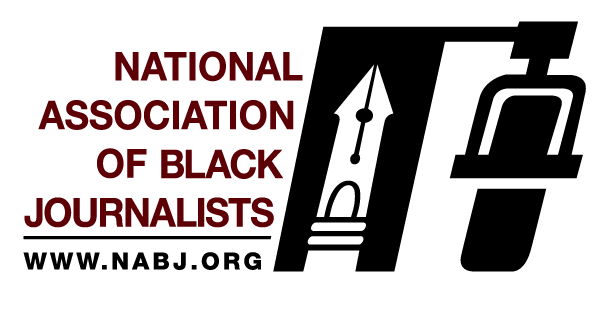The Divisive Stage: Trump’s Controversial Appearance at the NABJ Convention
August 1, 2024, 11:24 pm
Donald J. Trump
Verified account
Location: United States, Virginia, Arlington
Employees: 201-500
Founded date: 2015
In the heart of Chicago, a storm brewed at the National Association of Black Journalists (NABJ) convention. The air crackled with tension as former President Donald Trump took the stage. His presence was like a lightning bolt, illuminating deep divides within the organization and the broader political landscape.
Trump’s invitation to speak at this gathering of Black journalists sparked fierce debate. Some hailed it as a necessary confrontation with power. Others saw it as a betrayal of the community’s values. The NABJ, a sanctuary for Black journalists, found itself at a crossroads.
As Trump faced a panel of journalists, the atmosphere shifted. Rachel Scott of ABC News, Harris Faulkner of Fox News, and Kadia Goba of Semafor posed questions that cut to the bone. Trump, known for his brash style, responded with a mix of bravado and deflection. He accused Scott of a “rude introduction,” claiming he had come in “good spirit.” Yet, his words dripped with hostility, echoing past grievances against Black journalists and politicians.
The backdrop of this event was heavy. Trump’s history of racially charged rhetoric loomed large. His infamous “birtherism” campaign against Barack Obama set the stage for a pattern of questioning the legitimacy of Black leaders. Now, he stood before a crowd that had every reason to scrutinize his motives.
Trump’s claims of being the “best president for the Black population since Abraham Lincoln” were met with mixed reactions. Some in the audience booed, while others clapped. This cacophony mirrored the nation’s fractured political landscape. His assertion that immigrants were “taking Black jobs” drew groans, a reminder of the stereotypes that often fuel division.
The NABJ’s decision to host Trump was not without controversy. Many members felt the convention should be a safe space, free from the vitriol that often accompanies Trump’s rhetoric. Yet, others argued that engaging with all candidates was essential. The tension between these viewpoints highlighted a fundamental question: Can dialogue occur in a space that has historically been marginalized?
As the event unfolded, Trump’s comments about the January 6 insurrection revealed his continued defiance. He expressed willingness to pardon those convicted for their roles in the Capitol riot, dismissing their actions as part of a flawed system. This stance, coupled with his comparisons to protests following George Floyd’s death, painted a troubling picture of his views on justice and accountability.
The internal conflict within the NABJ mirrored broader societal debates. Some members supported the invitation as a chance to hold Trump accountable. Others felt it legitimized a figure whose past actions had harmed communities of color. The NABJ’s history of inviting political figures added complexity to the discussion. Yet, the stakes felt higher this time.
Trump’s campaign has sought to woo Black voters, emphasizing economic policies while simultaneously advocating for measures like stop-and-frisk. This duality raises questions about sincerity. Can a candidate who has historically marginalized communities suddenly become their champion?
As the convention unfolded, the absence of Vice President Kamala Harris loomed large. Her campaign had been in talks to participate, but the decision remained pending. This absence was felt keenly, especially as the Democratic Party prepared to celebrate her historic nomination. The juxtaposition of Harris’s potential candidacy against Trump’s divisive rhetoric highlighted the stark choices facing voters.
The city of Chicago, a backdrop for this political drama, has its own complicated history with Trump. His previous visits have been met with protests and criticism. Mayor Brandon Johnson’s statement underscored the city’s opposition to Trump’s agenda while promising safety during his visit. This tension encapsulated the broader struggle between progressive values and Trump’s polarizing presence.
As the event concluded, the NABJ faced a reckoning. The organization must navigate the delicate balance between free speech and the responsibility to protect its members. The division within the NABJ reflects a larger national conversation about race, identity, and political engagement.
In the end, Trump’s appearance at the NABJ convention was more than just a speech. It was a flashpoint. A moment that forced journalists and the public to confront uncomfortable truths about race, power, and the future of American democracy. The echoes of this event will resonate long after the lights dimmed and the crowd dispersed.
The stage was set, but the outcome remains uncertain. As the political landscape shifts, one thing is clear: the conversation about race and identity in America is far from over. The NABJ stands at the forefront of this dialogue, tasked with navigating the complexities of a divided nation. In the face of adversity, the call for unity and understanding becomes more crucial than ever.
Trump’s invitation to speak at this gathering of Black journalists sparked fierce debate. Some hailed it as a necessary confrontation with power. Others saw it as a betrayal of the community’s values. The NABJ, a sanctuary for Black journalists, found itself at a crossroads.
As Trump faced a panel of journalists, the atmosphere shifted. Rachel Scott of ABC News, Harris Faulkner of Fox News, and Kadia Goba of Semafor posed questions that cut to the bone. Trump, known for his brash style, responded with a mix of bravado and deflection. He accused Scott of a “rude introduction,” claiming he had come in “good spirit.” Yet, his words dripped with hostility, echoing past grievances against Black journalists and politicians.
The backdrop of this event was heavy. Trump’s history of racially charged rhetoric loomed large. His infamous “birtherism” campaign against Barack Obama set the stage for a pattern of questioning the legitimacy of Black leaders. Now, he stood before a crowd that had every reason to scrutinize his motives.
Trump’s claims of being the “best president for the Black population since Abraham Lincoln” were met with mixed reactions. Some in the audience booed, while others clapped. This cacophony mirrored the nation’s fractured political landscape. His assertion that immigrants were “taking Black jobs” drew groans, a reminder of the stereotypes that often fuel division.
The NABJ’s decision to host Trump was not without controversy. Many members felt the convention should be a safe space, free from the vitriol that often accompanies Trump’s rhetoric. Yet, others argued that engaging with all candidates was essential. The tension between these viewpoints highlighted a fundamental question: Can dialogue occur in a space that has historically been marginalized?
As the event unfolded, Trump’s comments about the January 6 insurrection revealed his continued defiance. He expressed willingness to pardon those convicted for their roles in the Capitol riot, dismissing their actions as part of a flawed system. This stance, coupled with his comparisons to protests following George Floyd’s death, painted a troubling picture of his views on justice and accountability.
The internal conflict within the NABJ mirrored broader societal debates. Some members supported the invitation as a chance to hold Trump accountable. Others felt it legitimized a figure whose past actions had harmed communities of color. The NABJ’s history of inviting political figures added complexity to the discussion. Yet, the stakes felt higher this time.
Trump’s campaign has sought to woo Black voters, emphasizing economic policies while simultaneously advocating for measures like stop-and-frisk. This duality raises questions about sincerity. Can a candidate who has historically marginalized communities suddenly become their champion?
As the convention unfolded, the absence of Vice President Kamala Harris loomed large. Her campaign had been in talks to participate, but the decision remained pending. This absence was felt keenly, especially as the Democratic Party prepared to celebrate her historic nomination. The juxtaposition of Harris’s potential candidacy against Trump’s divisive rhetoric highlighted the stark choices facing voters.
The city of Chicago, a backdrop for this political drama, has its own complicated history with Trump. His previous visits have been met with protests and criticism. Mayor Brandon Johnson’s statement underscored the city’s opposition to Trump’s agenda while promising safety during his visit. This tension encapsulated the broader struggle between progressive values and Trump’s polarizing presence.
As the event concluded, the NABJ faced a reckoning. The organization must navigate the delicate balance between free speech and the responsibility to protect its members. The division within the NABJ reflects a larger national conversation about race, identity, and political engagement.
In the end, Trump’s appearance at the NABJ convention was more than just a speech. It was a flashpoint. A moment that forced journalists and the public to confront uncomfortable truths about race, power, and the future of American democracy. The echoes of this event will resonate long after the lights dimmed and the crowd dispersed.
The stage was set, but the outcome remains uncertain. As the political landscape shifts, one thing is clear: the conversation about race and identity in America is far from over. The NABJ stands at the forefront of this dialogue, tasked with navigating the complexities of a divided nation. In the face of adversity, the call for unity and understanding becomes more crucial than ever.


